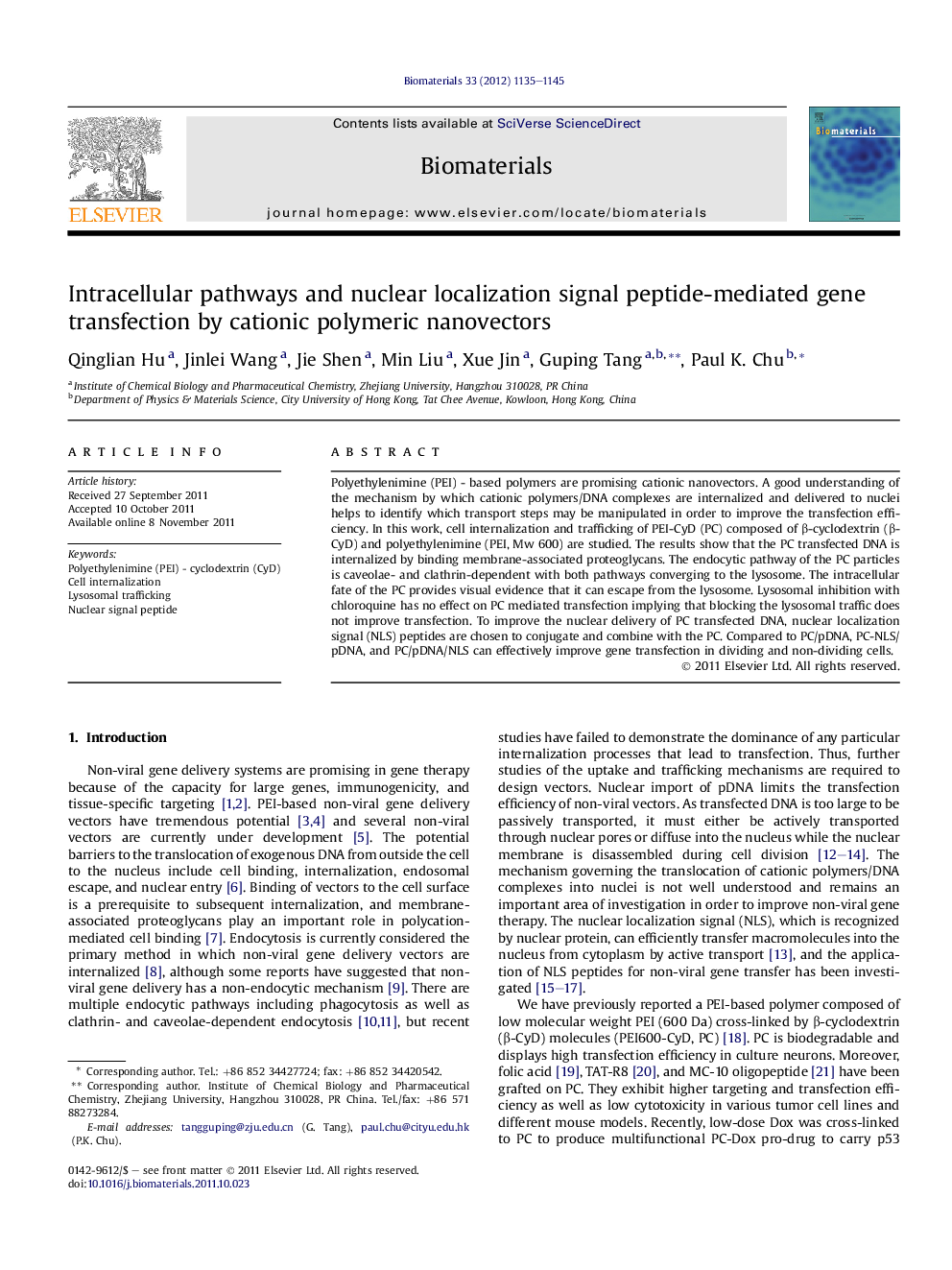| Article ID | Journal | Published Year | Pages | File Type |
|---|---|---|---|---|
| 10229428 | Biomaterials | 2012 | 11 Pages |
Abstract
Polyethylenimine (PEI) - based polymers are promising cationic nanovectors. A good understanding of the mechanism by which cationic polymers/DNA complexes are internalized and delivered to nuclei helps to identify which transport steps may be manipulated in order to improve the transfection efficiency. In this work, cell internalization and trafficking of PEI-CyD (PC) composed of β-cyclodextrin (β-CyD) and polyethylenimine (PEI, Mw 600) are studied. The results show that the PC transfected DNA is internalized by binding membrane-associated proteoglycans. The endocytic pathway of the PC particles is caveolae- and clathrin-dependent with both pathways converging to the lysosome. The intracellular fate of the PC provides visual evidence that it can escape from the lysosome. Lysosomal inhibition with chloroquine has no effect on PC mediated transfection implying that blocking the lysosomal traffic does not improve transfection. To improve the nuclear delivery of PC transfected DNA, nuclear localization signal (NLS) peptides are chosen to conjugate and combine with the PC. Compared to PC/pDNA, PC-NLS/pDNA, and PC/pDNA/NLS can effectively improve gene transfection in dividing and non-dividing cells.
Related Topics
Physical Sciences and Engineering
Chemical Engineering
Bioengineering
Authors
Qinglian Hu, Jinlei Wang, Jie Shen, Min Liu, Xue Jin, Guping Tang, Paul K. Chu,
